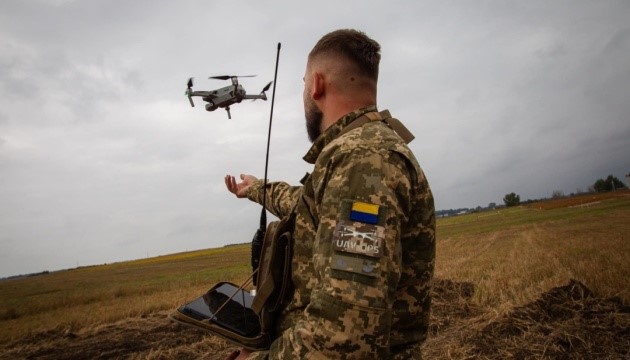Since the beginning of the full-scale invasion of Ukraine, artificial intelligence has become a crucial tool in improving the country’s rebuilding. In this blog post, HROMADA member Iryna Fyshchuk explores the potential applications of AI tools across various sectors in the post-war reconstruction of Ukraine.
Ukraine is fighting with the largest country in the world in terms of size and with the second most powerful military that possesses the world’s largest nuclear military arsenal. This makes asymmetric approaches – often anchored in new Ukrainian technologies or supplied by partners from democratic countries – crucial for Ukraine’s defence and rebuilding. Ukraine is constantly looking for new creative approaches that will give the country advantages. Indeed, Ukrainian bravery, the spirit of freedom and creativity have become the defining features of the resistance against Russia’s aggression and the mitigation of its consequences.
Leveraging the potential of artificial intelligence within ethical boundaries
Artificial intelligence (AI) is increasingly being used as one of the key creative innovations since the full-scale invasion began in Ukraine. It provides advantages on the battlefield and can make a tremendous contribution to the country’s rebuilding. There is a lot of fearmongering about AI: that in the future, AI will replace human labour and so on. However, pilot examples in Ukraine show that these technologies can help handle complex tasks, such as the recovery of Ukrainian territories, the modernisation of its damaged infrastructure, and even the assistance of individuals who need health care and rehabilitation.
As of February 2024, the World Bank, the United Nations, and the European Commission jointly estimated the total cost of Ukraine’s post-war rebuilding and recovery to constitute USD 486 billion, which is steadily growing. Applying AI to the management of rebuilding processes and keeping track of its progress is, therefore, essential. In the latter vein in particular, AI can also be utilised to address the challenge of donor coordination so that international donors can easily view each other’s projects and progress, as well as create synergies rather than duplicate efforts. However, the success of AI applications in the Ukrainian context will depend on the proper management of threats this technology brings with it, such as data protection or discrimination. Thus, human regulators must create rules and laws that would make misuse impossible and ensure full control over AI algorithms.
Here is an overview of key sectors for leveraging artificial intelligence in Ukraine’s post-war reconstruction. The use of AI is described below with some examples.

Fig. 1. Key sectors for using AI in post-war rebuilding work in Ukraine.
Source: own elaboration.
AI as a tool to speed up the demining of Ukraine
There are already certain cases illustrative of the value of AI in various fields – one of the urgent challenges Ukraine faces due to the Russian invasion deals with demining. According to Human Rights Watch, eleven of Ukraine’s twenty-seven regions (or almost 30% of its territory) are contaminated with land mines and other explosive remnants of war. Mines constitute a direct threat to human security, and there have already been numerous occasions when adults and children lost their lives because of them. In addition, landmines and other explosives make it impossible for farmers to use their land, which affects agricultural productivity. Moreover, the reconstruction of houses and critical infrastructure remains difficult in mined areas, preventing the return of displaced persons. New AI systems are developed to address these challenges.
In the agricultural field, the Minister of Economy Yuliya Svyridenko mentioned: “In particular, the system will analyse data as to potentially mined territories, combining them with data from additional sources, for example, as to the objects of social or critical infrastructure and create options for priority ways to demine”.
In a wider demining context for example, the founder of the company “UADamage” Vitaly Lopushansky said:
Since the beginning of the war, we started the digitalisation of damage using satellite data and artificial intelligence. We created a team that helps us integrate artificial intelligence into the demining process. Large demining territories have to be prioritised, that is why we use satellite data to digitalise craters, trenches, and other elements we find and put them on the cadastral register map.
The use of AI-based demining solutions can contribute both to the process speed and safety, yet extensive efforts are required to protect data on demined territories and ensure non-intervention by third parties.

Using AI to secure justice for Ukraine
The implementation of both the unified judicial information and telecommunication system (UJITS) and the “Diia” application has become an integral part of online justice and the introduction of AI in Ukraine. The UJITS project aims to create a streamlined system of storing and exchanging all relevant data in the judicial domain. Launched in 2020, the Diia application enables Ukrainian citizens to use digital documents and have access to more than 130 state services on their smartphones.
During the war, processing information on citizens, as well as objects – such as damaged and fully destroyed homes – became more efficient with the implementation of those instruments. The state announced the collection of information on damaged objects through the Diia application, and the program E-Vidnovlennya (E-recovery) provides for the provision of state assistance by adding all documents through the application by the citizens. Moreover, through the Diia app, citizens can register as internally displaced persons and receive social benefits.
At the same time, new facial recognition AI tools provide the possibility to recognise suspicious persons. According to the Minister of Digital Transformation of Ukraine, Mykhailo Fedorov, with the help of the facial recognition system, it was possible to establish the identities of Russian soldiers who participated in the attack on civilians in the Kyiv region. In addition, the Ukrainian YouControl, together with the AI company Artellence and Ukraine’s secret service, launched the TyHto (Whoareyou) application, which allows for the quick identification of suspicious individuals.
AI’s potential for health care and rehabilitation
Considering that the war is still ongoing, and the number of wounded continues to increase, including those who have psychological wounds, the Ukrainian society needs new methods of assistance. AI has already been applied in relation to prosthetics, diseases of the cardiovascular system, and psychological trauma. In Lviv, the company Unlimited Tomorrow, which produces bionic prostheses, together with the National Rehabilitation Centre “Nezlamni” (UNBROKEN) and other partners, is engaged in prosthetics for people who lost limbs during the war. These functional bionic prostheses are created using AI algorithms. They process muscle movements and make the prosthetic fingers bend and behave like a real human limb.

Photo from the website: https://dobro.ua/en/project/unbroken/
Other ways to harness AI for Ukraine’s restoration
As the examples have shown, there are already several cases illustrative of how AI is addressing the challenges of the invasion. There is, however, much more potential, and the country should use AI more systematically in its post-war reconstruction.
In war-damaged infrastructure, the startup company TensorFlight supports AI imaging-based automation of commercial property inspections and claims processing, helping underwriters with risk assessment. This technology makes it possible to evaluate the exact level of destruction of housing and infrastructure facilities and to carry out the most accurate damage assessment available at the moment.
In cyber security, the government plans to use AI to create national information systems, platforms, and products that protect communication, information, and technological systems.
In public administration, AI has the potential to enhance the automation of document circulation processes, leading to better efficiency in time savings, decision-making, and service delivery. It can also help detect the dishonest behaviour of officials by analysing patterns, monitoring financial transactions, and this technology can enhance transparency and accountability in governance.
In the field of legal regulation, Ukraine is currently integrating the European Union’s rules into national legislation, which will improve the provision of legal assistance to Ukrainians. AI can also be used to tackle the progress and challenges of the law harmonisation process.
The future rebuilding of Ukraine should be implemented through short – and long-term planning. It is important that such rebuilding plans include AI technology to make them more efficient. Rebuilding Ukraine, especially in the digital era, requires coordinated actions of AI developers, lawmakers, businesses, the scientific community, and civil society. This process should not be fragmentary, but complex and structured.
Recommendations for the Ukrainian government
Regulatory Framework: Establish a regulatory framework in cooperation between industry leaders, academic institutions, and civil society organisations that outlines the legal and ethical guidelines for AI deployment. This framework should be correlated with the EU regulation, which is on its way and will include issues such as data privacy and fairness.
Data Governance: Develop policies jointly with industry leaders and data protection agencies for data collection, storage, sharing, and usage to ensure that AI systems have access to high-quality and ethically sourced data and implement measures to protect sensitive information. This will help ease the panic around AI.
Public participation: Involve civil society organisations, academic institutions, and industry leaders in the development and implementation of AI policies through consultation processes, public forums, and workshops. Ensure that AI applications align with the needs and priorities of the local community, for instance.
Training: Provide training programs in cooperation between industry leaders, academic institutions, civil society, and international donors to equip public employees and society with the skills and knowledge necessary to work effectively with AI technologies. Foster a culture of continuous learning and innovation within the given organisation.
Partnerships: Maintain and develop partnerships with universities and industry leaders to leverage expertise, resources, and best practices in AI development and implementation.
Monitoring and evaluation: Establish mechanisms by a dedicated regulatory body or agency with oversight authority over AI technologies for monitoring the performance and impact of AI initiatives in local government settings. Regularly evaluate the effectiveness of AI systems in achieving their intended objectives and adjust as needed.
Ethical considerations: Prioritise ethical considerations in AI by involving a collaborative effort among various government agencies, regulatory bodies, technology companies, academic institutions, civil society, and ethicists to ensure that AI systems uphold fundamental human rights, avoid discrimination, and promote social justice and equity.
It is essential for public authorities in Ukraine to adapt AI policies to their specific context, considering regulations and cultural norms. Moreover, ongoing dialogue with society and stakeholders will help ensure that AI can efficiently support Ukraine’s restoration.


